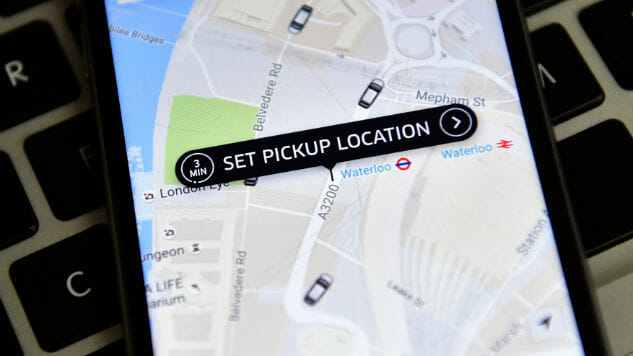Greyball Reveals How Uber Has Been Dodging City Authorities
Photo by Carl Court / Getty Images
Can you remember the last time you went a week without seeing some headline about an Uber controversy or misstep?
It’s become a calling card of sorts as the ride-hailing app jostles with scandal after scandal whether it’s accusations of sexual harassment in its offices or taxi drivers taking to the streets to protest against its service. A recent New York Times profile of CEO Travis Kalanick was particularly illuminating, including a bust-up with Apple over clandestine tracking of Uber users that had deleted the app.
Another controversy that has been brewing relates to Greyball, a secretive piece of software that Uber used to detect and avoid city officials hailing a ride from one of its drivers. First reported by the Times back in March, the software has got Uber into trouble once again as federal investigators have begun poking around over the last few weeks.
Uber has always had a tumultuous relationship with city governments. The company apparently used Greyball for years to try and identify city officials and law enforcement officials so that these people could not hail rides from its drivers. The software was employed mostly in cities where Uber’s legal standing was questionable to avoid authorities that were trying to clamp down on the service.
Greyball was used in several US cities but also globally in cities such as Paris, where Uber has faced particularly strong opposition, and in countries like China where it has been keen to try and gain a stronger foothold.

Photo by Justin Sullivan / Getty Images.
Greyball was one component of a program called VTOS (violation of terms of service), initially designed to detect people that are violating the app’s terms.
In 2014, Uber had just launched in Portland without the proper approvals. Erich England, a city official, was tasked with carrying out a sting operation by posing as a regular user looking to hail a ride. However, England and other officials were ‘greyballed’—they had been identified as authorities so no Uber drivers were alerted to their ride requests.
One supposed method of identifying possible cops or investigators was geofencing public office buildings and monitoring use of the app in this space. It also allegedly viewed users’ payment information for possible links to bodies like a police credit union.
In response, Uber has stopped using the software but still stuck to its guns saying VTOS was used to protect its drivers, protect itself against competitor sabotage, and “opponents who collude with officials on secret ‘stings’ meant to entrap drivers.”
-

-

-

-

-

-

-

-

-

-

-

-

-

-

-

-

-

-

-

-

-

-

-

-

-

-

-

-

-

-

-

-

-

-

-

-

-

-

-

-









































